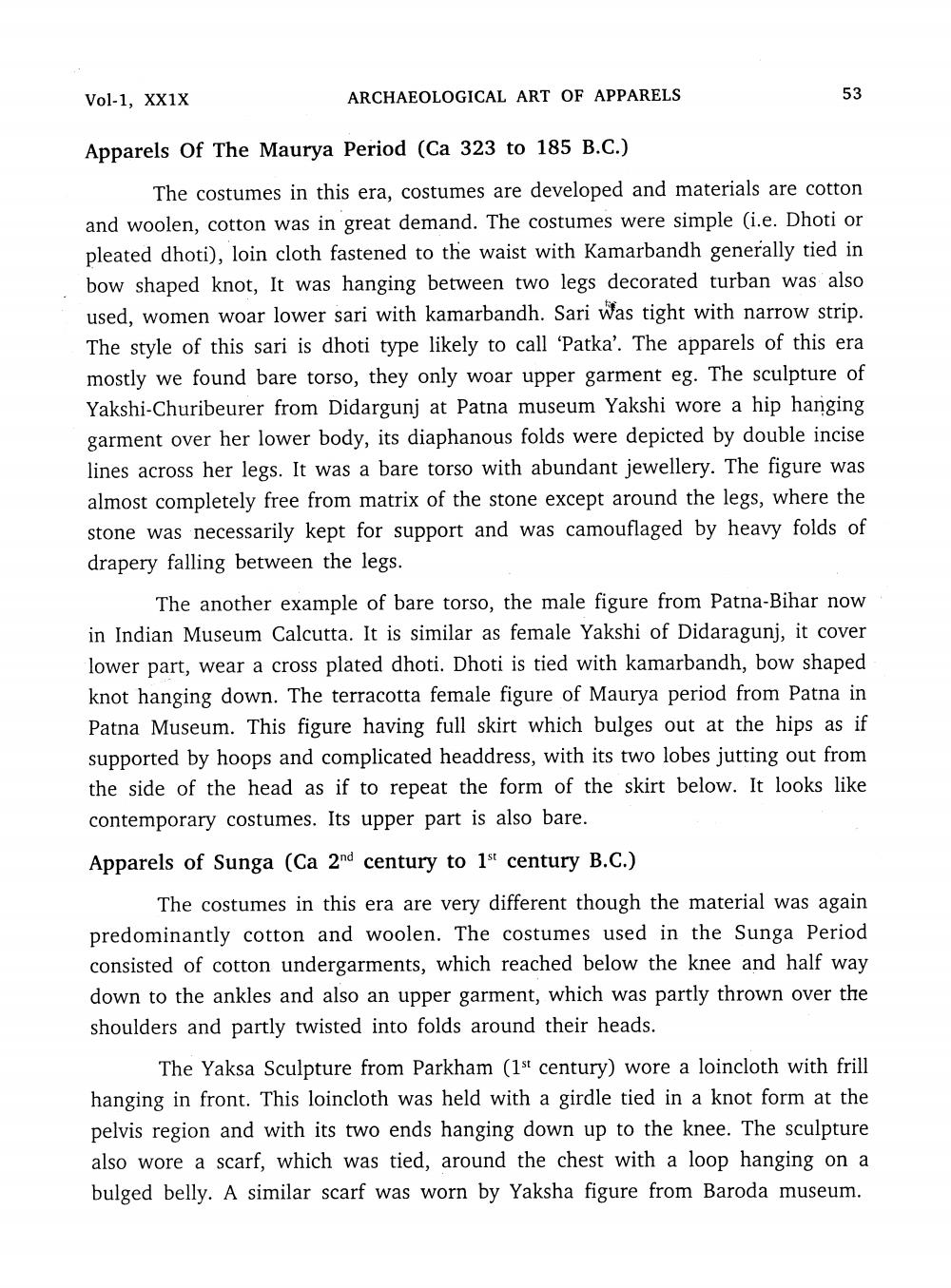________________
Vol-1, XX1x
ARCHAEOLOGICAL ART OF APPARELS
53
Apparels Of The Maurya Period (Ca 323 to 185 B.C.)
Ti
The costumes in this era, costumes are developed and materials are cotton and woolen, cotton was in great demand. The costumes were simple (i.e. Dhoti or pleated dhoti), loin cloth fastened to the waist with Kamarbandh generally tied in bow shaped knot, It was hanging between two legs decorated turban was also used, women woar lower sari with kamarbandh. Sari Was tight with narrow strip. The style of this sari is dhoti type likely to call ‘Patka’. The apparels of this era mostly we found bare torso, they only woar upper garment eg. The sculpture of Yakshi-Churibeurer from Didargunj at Patna museum Yakshi wore a hip hanging garment over her lower body, its diaphanous folds were depicted by double incise lines across her legs. It was a bare torso with abundant jewellery. The figure was almost completely free from matrix of the stone except around the legs, where the stone was necessarily kept for support and was camouflaged by heavy folds of drapery falling between the legs.
The another example of bare torso, the male figure from Patna-Bihar now in Indian Museum Calcutta. It is similar as female Yakshi of Didaragunj, it cover lower part, wear a cross plated dhoti. Dhoti is tied with kamarbandh, bow shaped knot hanging down. The terracotta female figure of Maurya period from Patna in Patna Museum. This figure having full skirt which bulges out at the hips as if supported by hoops and complicated headdress, with its two lobes jutting out from the side of the head as if to repeat the form of the skirt below. It looks like contemporary costumes. Its upper part is also bare.
Apparels of Sunga (Ca 2nd century to 15 century B.C.)
The costumes in this era are very different though the material was again predominantly cotton and woolen. The costumes used in the Sunga Period consisted of cotton undergarments, which reached below the knee and half way down to the ankles and also an upper garment, which was partly thrown over the shoulders and partly twisted into folds around their heads.
The Yaksa Sculpture from Parkham (1st century) wore a loincloth with frill hanging in front. This loincloth was held with a girdle tied in a knot form at the pelvis region and with its two ends hanging down up to the knee. The sculpture also wore a scarf, which was tied, around the chest with a loop hanging on a bulged belly. A similar scarf was worn by Yaksha figure from Baroda museum.




